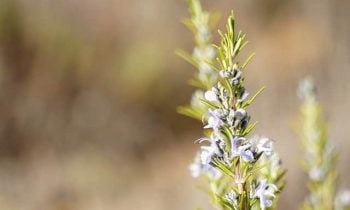Essential oils are so named because they are derived from the “essence” of plant material. The resulting oil can be applied topically to plants, animals and people for a number of benefits. Through ingestion and breathing in the aroma of essential oils, humans can also impact their mental and physical states of being in a positive manner.
While many use essential oils around the world, not everyone understands how they are manufactured. What is the process that gets these natural healing oils from leaves, roots, stalks and other plant and tree parts? The following are a few of the more common ways essential oil makes it from nature to your diffuser.
Steam Distillation
This is the most common method for extracting essential oils from plant products. When subjected to steam in a controlled environment, a plant’s volatile compounds are vaporized, condensed and then collected. Since steam temperatures of between 140 and 212°F are used, this process may result in lower quality oil than some other production methods.
Extraction with Solvents
Food-grade solvents are used in this process to get essential oils out of plant material. This method is often used when tender plant material would be damaged using the steam distillation process. Trees and plants that have sap or resin yield essential oils more satisfactorily with this process than with others. The solvents which isolate the essential oil from its plant material include ethanol and hexane.
CO2 Extraction Process
The CO2 extraction process yields essential oils that are perfect for aromatherapy applications, as well as for use in natural perfumes. While the steam distillation process is the most common because it is a simple, low-cost way to create essential oils, the CO2 production process creates higher-quality oils. This is because the virality and essence of the plant material is not damaged by the heat of steam.
Essential oils derived this way are much closer in molecular construction to the plant material used, since high temperatures do not alter that molecular makeup. Oils obtained this way are generally thicker in consistency than other oils, and usually give off more of the natural aroma of the plant used.
Expression
This is the way olive oil is made. Straightforward and simple, expression simply involves providing direct pressure to plant material like flesh, skins and seeds. This is often used as the preferred method for producing citrus essential oils.
Maceration
You may see these oils labeled “infused oils”. Using carrier oils to pull therapeutic healing properties from plant material, the maceration process results in more of the essence of a plant captured than any of the distilled processes. Using maceration to produce essential oils works best when the plant material is as dry as it can be. The plant products used are crushed or ground into a course powder before carrier oil is added to extract the resulting essential oil.
Enfleurage
This method is not commonly used, but it bears mentioning because it is one of the most ancient procedures used to create essential oils. Vegetable fat or animal fat is used in either a hot or cold process, and that fat gets infused with the essence of the plant material.
There are many ways to pull the healing properties out of plant material. As you just discovered, some processes are cleaner than others, and result in a higher quality oil. In every case, no matter how the essential oils are created, you benefit from a product that offers natural healing benefits through either a topical, ingestion or aromatic application.


 Gift Giving Guidelines
Gift Giving Guidelines 6 of the Most Popular Essential Oils and What They Can Do for Your Health
6 of the Most Popular Essential Oils and What They Can Do for Your Health 7 Essential Oils for Energy
7 Essential Oils for Energy